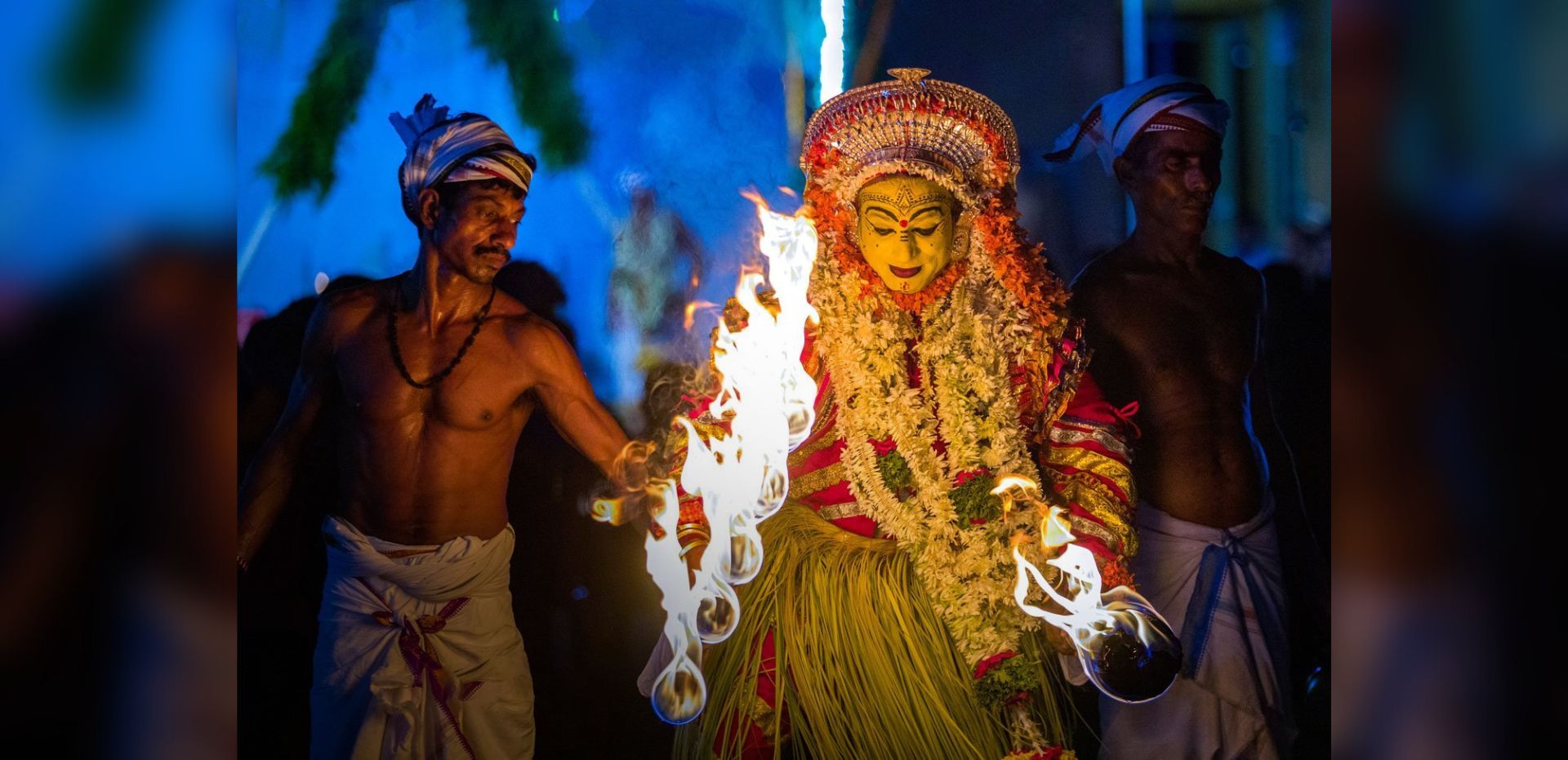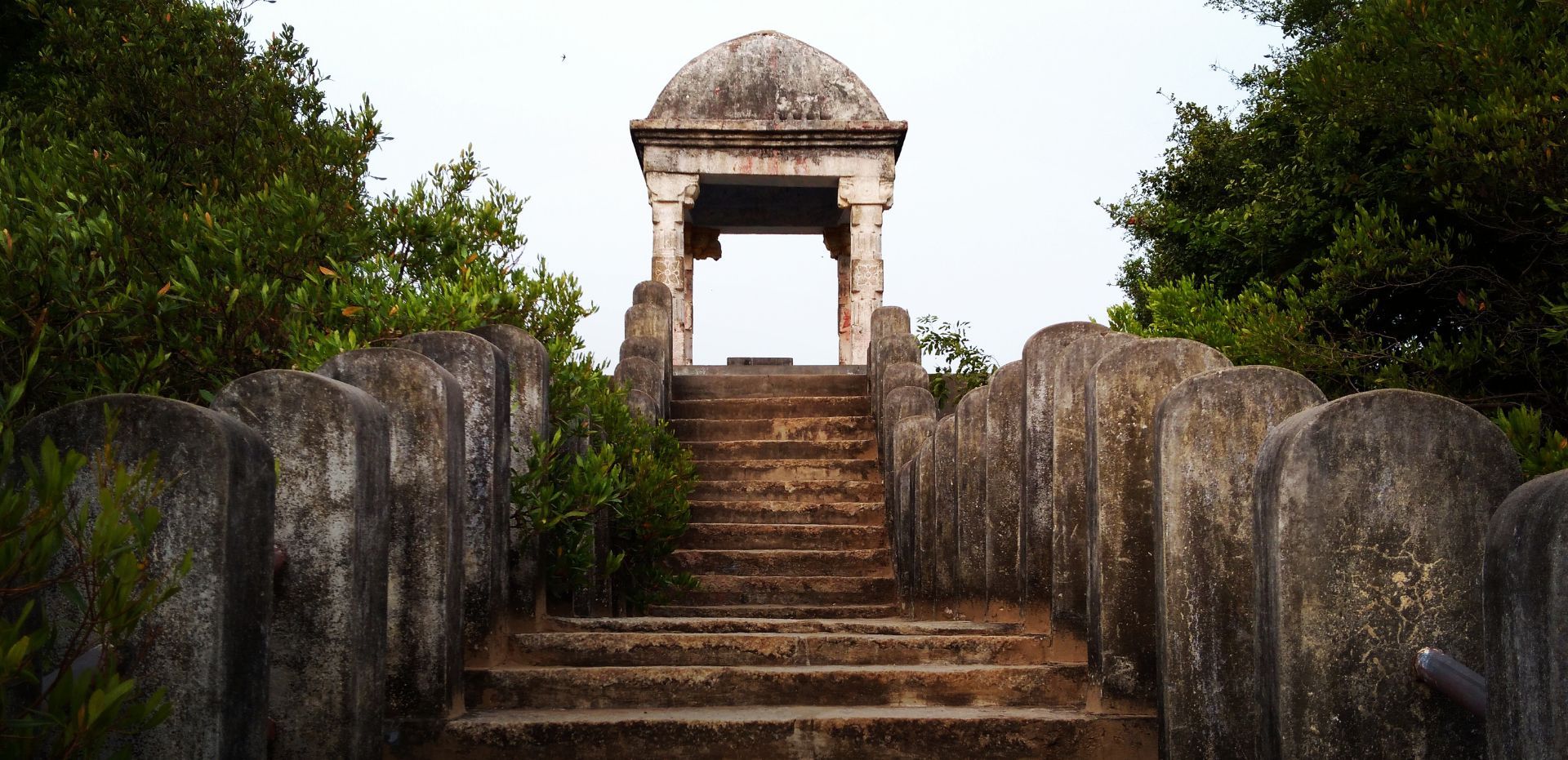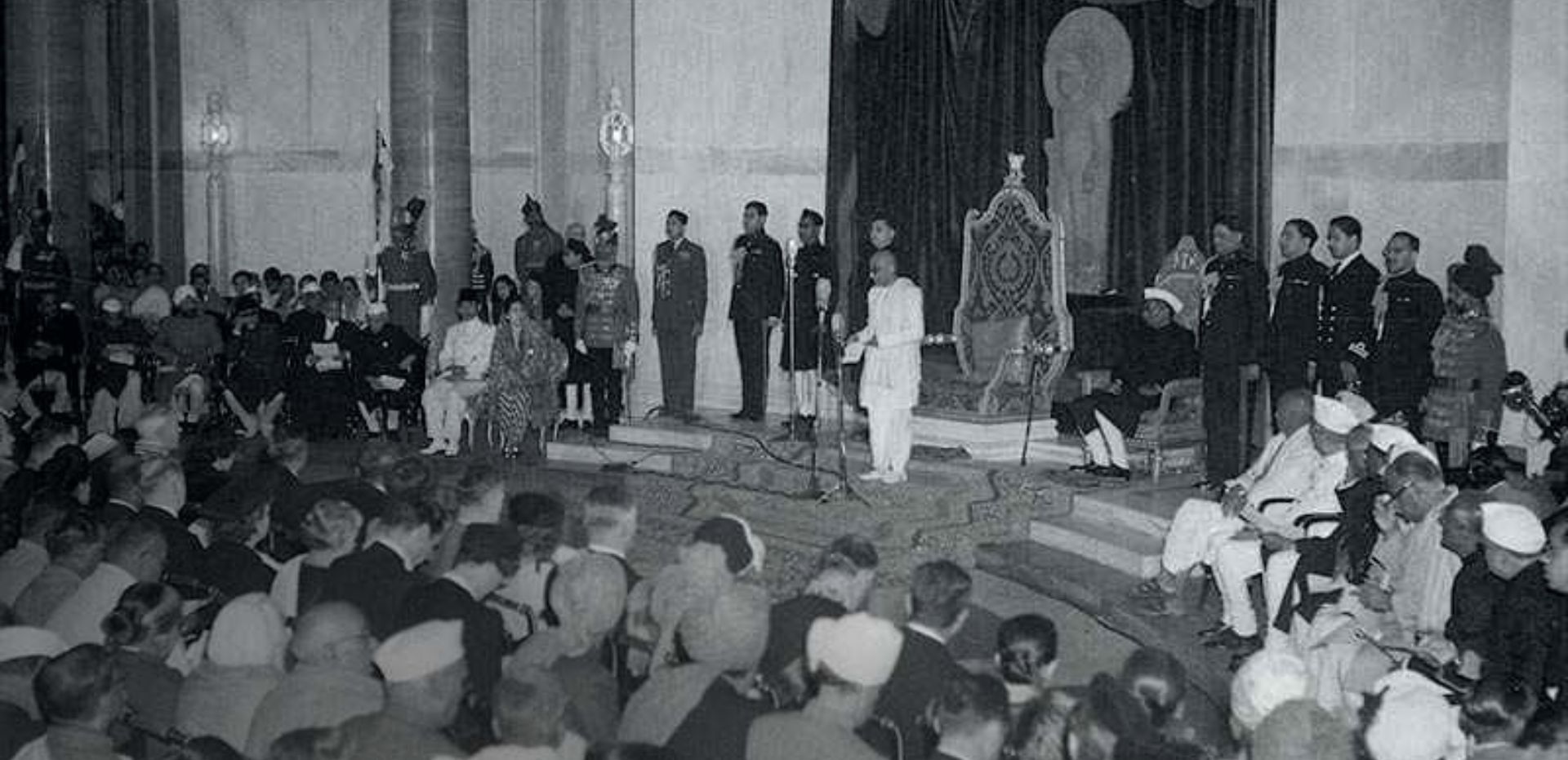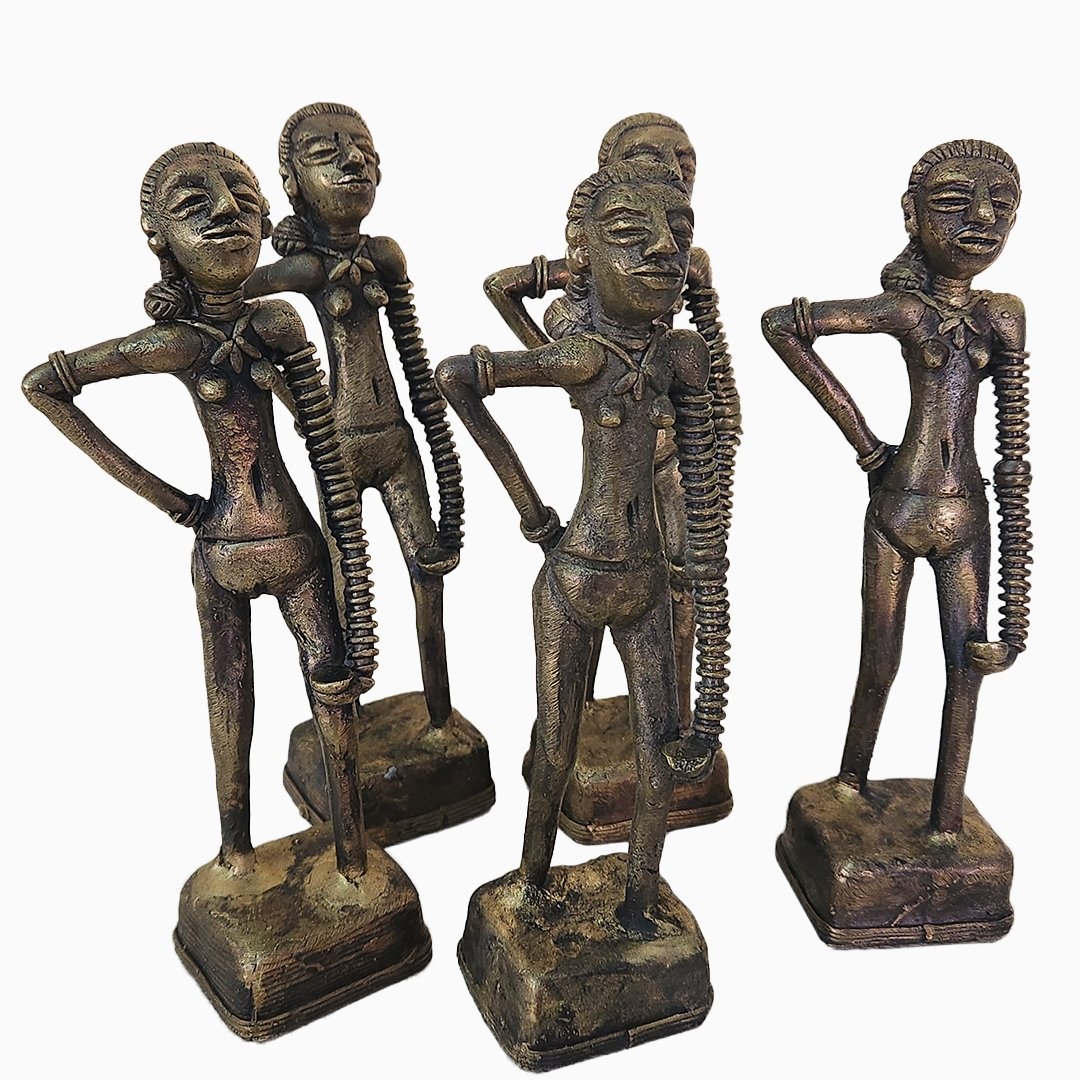Hetampur: A Tiny Royal Gem
BOOKMARK
Visiting the Bengal countryside is a little like falling down a rabbit hole – only, the astonishing wonders here are for real. Depending on where you are, and when you least expect it, you stumble upon Victorian-style palaces, ornate terracotta temples and arched gateways with coats of arms, seemingly in the middle of nowhere. These monuments, which are fast surrendering to the ravages of time, are relics of the region’s grand and glorious past.
Drive around Hetampur village in Birbhum district, not far from Murshidabad, and you will be delighted by the ‘Ranjan Prasad’, or a hazarduari, a ‘palace of a thousand doors’. Although this palace does not rival its namesake in Murshidabad, either in size or splendour, it is a symbol of the lost glory of this former zamindari estate and Hetampur’s star attraction.
Hetampur, around 200 km from Kolkata, was a zamindari estate that evolved into Hetampur Raj, headed by a local ruling family with a royal title. But its story is inextricably linked with that of the town of Rajnagar, 30 km to its north.
Till the 1690s CE, the region around Hetampur was largely forested. The land was cleared by a local zamindar named Raghab Roy, who built a township here called ‘Raghabpur’. But Roy clashed with the ruler of Rajnagar, the capital of a local Afghan dynasty ruled by feudatories of the Mughal Empire. The ruler of Rajnagar dispatched his General Hatem Khan to subdue Raghab Roy. Following this conquest, the town was renamed ‘Hatempur’, which was corrupted to ‘Hetampur’.
Soon after Hatem Khan’s death in 1725 CE, the Chaitanya Charan Chakraborty family arrived in Hetampur from Bankura, to serve the local rulers. He founded ‘Hetampur Raj’, which grew into one of the most powerful zamindaris in Birbhum and even beyond. The town began to prosper in the late 18th CE due to the zeal and proficiency with which the Chakraborty family administered and expanded their territory. The family threw in their lot with the British who were then ruling India and, in turn, earned royal status in 1877, when the then ruler, Ramranjan Chakraborty, was conferred the title of ‘Raja Bahadur’. In 1912, he was given the title of ‘Maharaja’.
It was Ramrajan Chakraborty who built the Ranjan Prasad, or Hetampur’s Hazarduari Palace, in 1905, and it remained the family’s royal seat till the abolition of the zamindari under the West Bengal Estate Acquisition Act, 1953 (West Bengal Act I of 1954) . Over time, the family built many other lavish structures, some in Victorian style, in Hetampur. Among those that remain are a beautiful, arched gateway, a brass chariot belonging to the Hetampur Raj family, terracotta-decorated brick temples, and the exquisite old Krishnachandra College. Many of these buildings have fallen into decay; some have been demolished; while others are being reused and have therefore survived.
Let us visit the grand palace, or the Ranjan Prasad, and other structures that remind us of the glory days of the Chakrabortys of Hetampur Raj.
TheRanjan Prasad or Hazarduari Palace
Built by Maharaja Ramranjan as the residence of the royal family in 1905, this magnificent structure literally has 999 or a thousand doors, which lends it its name. The palace complex is fronted by a monumental, red brick gateway. Its façade has huge Corinthian pillars interspersed with arched windows and entrances. Under the central pediment is the shell of what was once a large clock.
The palace itself is sprawling, its most striking feature, apart from its size, being the gigantic Corinthian columns holding up its porch. Built in Victorian style with Gothic features, the pediment boasts a coat of arms on top, which is referred to as the logo of the Hetampur Royal family. The rooftop of the imperial palace is huge and offers a grand view of the surroundings. From the corridors, you can gaze across at doors embedded in each wall.
In the mid-20th century, the Hetampur Raj estate was divided among Ramrajan Chakraborty’s sons. The right side of the palace was inherited by Sada Niranjan, while the left side was given to Kamala Niranjan. At present, only the descendants of Kamala Niranjan Chakraborty live here.
This majestic palace has also secured a place in pop culture as it has formed the favourite backdrop of many filmmakers and artistes. Music director Rahul Dev Burman, magician P C Sircar, Bengali actor and comedian Nabadwip Haldar performed at the palace on the occasion of the Upanayana ceremony of Rajkumar Rebati Ranjan, the great grandson of Raja Ramranjan Chakraborty. Legendary film directors Satyajit Ray, Mrinal Sen, Tarun Majumdar and Sandip Ray have also used this royal residence as a backdrop in their films.
Frescoes at the Ranjan Palace
A large hall on the first floor of the Ranjan Palace is adorned with splendid frescoes. Kamala Niranjan Chakraborty was passionate about art and his patronage encouraged artists to flourish. His emblem, the initial words of his name (i.e. KNC) can be seen on the wall of the room facing the balcony. Even the arched niches above the many doors and the roof overlooking the wide staircase boast elegant floral motifs. A portion of the left wall displays floral motifs and vividly-colored frescoes depicting scenes from Indian mythology. Frescoes on the arches depict scenes from the Ramayana and Vishnu Puraná.
Brass Chariot of Hetampur Raj Family
Parked under a small roofed shelter on one side of the palace building is the royal chariot. Made of brass, it was imported from England during the glory days of Hetampur Raj. Now, a Ratha Yatra, which is a public procession in a chariot with Hindu deities, is celebrated every year with great pomp and show by descendants of Kamala Niranjan Chakraborty. On the occasion, idols of Gouranga and Nityananda Ji are placed on the chariot, which is topped by five churas or pinnacles. Hetampur wears a wonderful festive mood during this time and the town’s residents follow the chariot as it makes its way through the streets. The royal brass chariot was restored by INTACH’s Santiniketan Chapter in 2015 but the roofed shelter under which it rests, year-round, is crumbling.
Chandranath Shiva Temple
Another star attraction of Hetampur is the octagonal Chandranath Shiva Temple built in 1847 by Krishnachandra Chakraborty. Although Birbhum district boasts some of the finest terracotta and brick temples in Bengal, the architecture of this temple is distinctly British. David McCutchion, noted for his ground-breaking work on Bengal’s terracotta temples, was originally inspired by a visit to Hetampur’s Chandranath Shiva Temple.
This unique, octagonal temple has nine bulging pinnacles (nearly resembling navaratna style of Bengal temple architecture), each pinnacle crowned by standing figurines with their arms outstretched. The pinnacles were designed in such a way that eight small domes rise around a larger, central dome. The three walls facing the front are adorned with intricately sculpted terracotta plaques and exquisite stucco work, while the other walls are devoid of either terracotta panels or stucco work.
Terracotta plaques in the Chandranath Temple bear the figures of important European personalities, including Queen Victoria, men in European hats, European nuns, priests and the Coat of Arms of the British East India Company.
This European-style adornment suggests an attempt by the sutradhars (temple architects) to appease the British officials of their patron. It gives the patron a chance to parade his European tastes as well as his power and status. The terracotta plaques on the front of the temple depict Goddess Durga, Gaja-Lakshmi and Krishna along with events from Hindu mythology and society.
There used to be a terracotta-decorated rash mancha (a hall for Krishna worship during the Rash festival on the auspicious day of Kartick Purnima) nearby but it was levelled in the 1960s. Mukul Chandra Dey, a leading painter of the Bengal School of Art, Kolkata, had extensively photo-documented these temples in the late 1940s.
Dewanji Shiva Temple
A stone’s throw from the Chandranath Shiva Temple stands another exquisite terracotta shrine, the Dewanji Temple. The temple is built in brick Rekha Deul style, an architectural type of Bengal temple, and from a specific spot named Hati Tala (due to the two elephant statues on each side of the road), one can see the pinnacle of this temple. Dewanji Temple was built during the late 19th century. Its façade has terracotta work depicting scenes, from the Ramayana and the Puranas, mainly Vishnu Purana, to contemporary everyday life, in exquisite detail.
The top panel depicts grief of the Gopinis when Krishna leaves for Mathura in Akrur’s chariot. The central panel of the temple depicts the Enthronement of Rama, a familiar feature in 19th century temples in Birbhum district. A wide array of smaller panels showcases figures in outlandish costumes, sahebs and memsahebs, dancing girls, a sadhu pounding hemp, animals etc.
Old Rajbari & Hetampur Raj School
A few minutes’ walk from the Hati Tala, down a sloping path is an old, rundown gateway with the emblem of Hetampur Raj. That gateway leads to the old palace or rajbari of Hetampur Raj, which is now crumbling. The huge columns, arches and stucco on the walls of the mansion are the worse for wear but it is easy to imagine just how majestic the structure must have been.
The old palace is now a part of the Radhamadhab Temple. An iron door in the building leads to a large concrete courtyard surrounded by a two-storey building. At the far end of the courtyard is a grand thakur dalan. It has six pillars and five arches, with each pillar containing multiple, small pilasters. Some remarkable European-influenced stucco work still exists in the corridors.
The old palace is the venue of the annual, three-day Saraswati Puja fair held in Hetampur. It’s a tradition that carries forward from town’s colonial past, when renowned personalities including British officers were invited to attend the fair, which hosted shows mounted by Minerva Theatre from Calcutta and the Hetampur Royal Theatre.
A renovated portion of the Old Rajbari now serves as the Hetampur Raj High School, which was established in 1869. It is still a premier institution in Birbhum district.
Krishnachandra College
The contribution of the Hetampur royal family to education is quite evident, another shining example of this being Krishnachandra College founded by the royal family. The oldest college in Birbhum district, it was founded in 1897 by Rani Padmasundari Devi, wife of Ramranjan, in honour of her father-in-law. Now affiliated to Burdwan University, the college building is a handsome structure previously used for the worship of Goddess Saraswati. It contains rich stucco work that bears a distinct European influence.
Cover Image: European-style gate at the entrance to the Ranjan Palace, Author
Acknowledgement by the author
Many thanks to Baishakhi Chakraborty, great-grand daughter of Kamala Niranjan Chakraborty of the Hetampur Raj family, for providing valuable inputs.
– LHI Travel Guide
The nearest railhead is Dubrajpur, which is well connected to Howrah Junction Railway Station. Local transport will take you from Dubrajpur station to Hetampur. SBSTC buses are available from different parts of Bengal to Shantiniketan Bolpur. Hetampur is about 40 km from here.
– ABOUT THE AUTHOR
Sk Abdul Amin is a research scholar at Jadavpur University, Kolkata. He is a travel writer and heritage enthusiast with an interest in history through the lens of art, culture and religion.
Dhokra art is a metal casting that uses the ancient lost-wax technique. It uses non-gerrous metal like copper and its alloys like brass or bronze. Buy Dhokra art exclusively at Peepul Tree India, click here.
If you enjoyed this article, you will love LHI Circle - your Digital Gateway to the Best of India's history and heritage. You can enjoy our virtual tours to the must-see sites across India, meet leading historians and best-selling authors, and enjoy tours of the top museums across the world. Join LHI Circle here

















